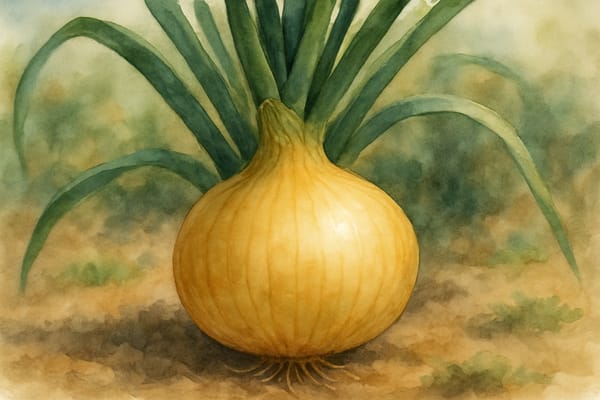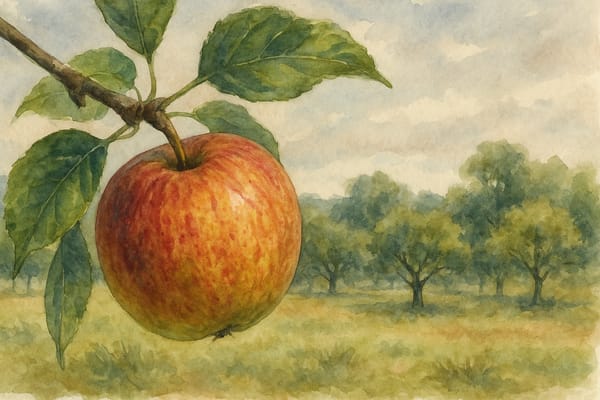In a quiet corner of a Cornish kitchen garden, where the sea breeze barely ripples the tall hedge of rosemary and the soil holds the memory of summer sun, the golden orbs of 'Ailsa Craig' onions begin to swell. Their pale straw-coloured skins glint just beneath the surface of the earth, nurtured over long months of gentle care. These are onions grown not from hurried sets but from seed — an old-fashioned, slower method that yields superior size, sweetness, and shape.
'Ailsa Craig' has long been celebrated among exhibition growers for its generous globes and mild, well-rounded flavour. Its name whispers of Scottish headlands and early plant breeding traditions, yet here in Cornwall, it finds another home — thriving in coastal plots and sheltered allotments where the soil is light and the days are long.
To grow them well is to begin with intention and patience. In December or January, when much of the garden still sleeps, the seeds are sown indoors — just a whisper deep in trays filled with fine, damp compost. A windowsill, a heated greenhouse, or a propagator gives the warmth they need to wake. In 7 to 14 days, green threads appear — delicate but determined.
Each seedling is nurtured through the dim weeks of winter, thinned and pricked into modules, and turned gently to the light. By spring, they’re hardened off, ready to meet the Cornish sun. Outdoors, the bed has been prepared since autumn — dug over with well-rotted compost and left to settle, its surface raked fine. Rows are drawn with care, 30 to 45cm apart, the seedlings tucked in 15cm from one another. Not too close — they need space to expand.
Ailsa Craig does not ask much — steady moisture, sun on its back, and no weeds to compete with its roots. The bed must be kept firm and open. A mulch of compost or straw can help retain moisture, but not so much that it shades the necks. As spring deepens, a side dressing of potash-rich feed encourages plump bulbs to form. Water is given deeply, but never drowned — the goal is constancy, not indulgence.
By midsummer, the signs begin to show. The necks soften, and the tall green tops slowly yellow and fall — a quiet bow to a season well spent. On a dry August day, the bulbs are lifted with care, laid out on racks or slats beneath sun or shelter, and left to cure. Two weeks pass as their skins dry and the flavour deepens.
These onions are not for the cellar. Their storage life is modest — better suited to autumn feasts and early winter meals. They’re best eaten fresh, their flavour mild and versatile. Roast them whole with herbs, slice them thin into salads, or stew them slowly in butter until sweet and silken.
In the Cornish Garden, ‘Ailsa Craig’ is a reminder that some of the finest harvests begin in the dark of winter — that care, patience, and good soil can produce food that’s beautiful, honest, and deeply satisfying. Whether for show or for supper, this golden onion earns its place in the garden and on the plate, year after faithful year.











